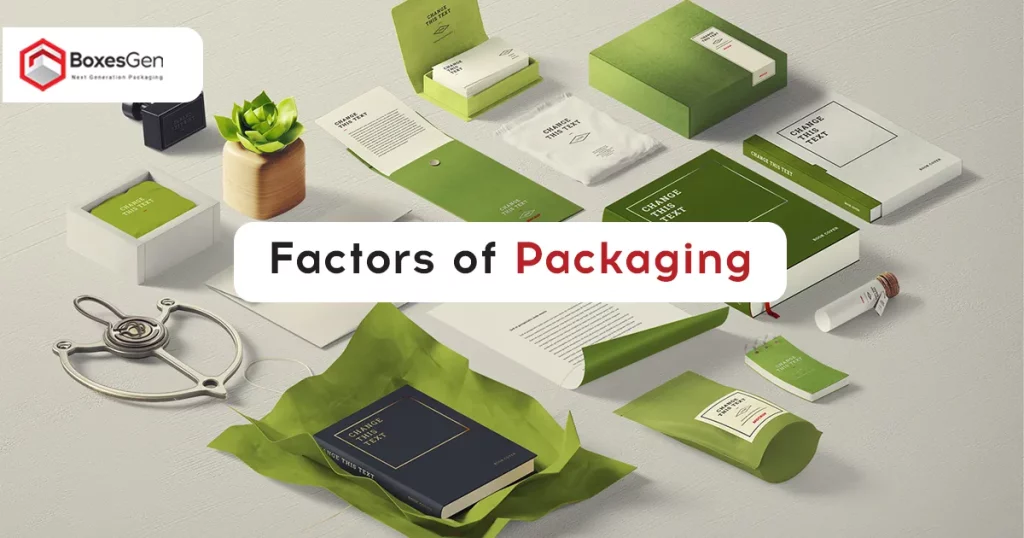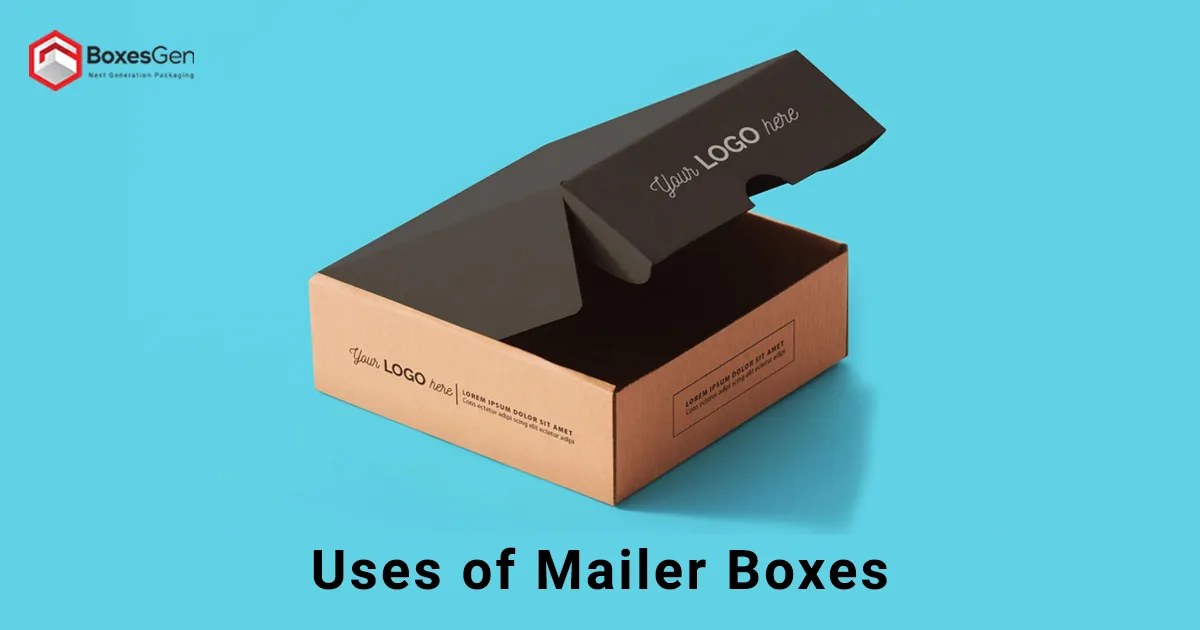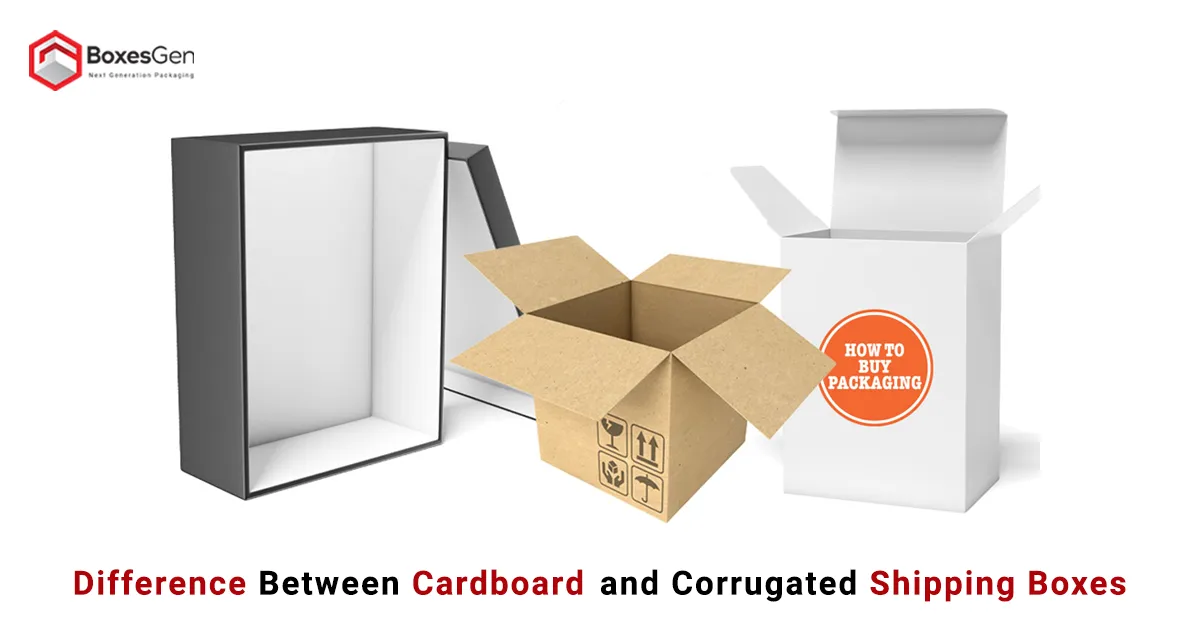Factors of Packaging
In the competitive business market, packaging can influence consumer decisions and ensures the safety and integrity of products. Numerous factors contribute to the design and selection of Packaging Materials, each with its own significance. Let’s explore the intricate world of packaging and discover the key factors that businesses consider when creating packaging solutions.
Sustainability
Sustainability has become a major concern in recent years as businesses strive to reduce their environmental footprint. Packaging choices heavily influence a product’s overall sustainability. Selecting eco-friendly materials and adopting recyclable or biodegradable options aligns with modern consumers’ eco-conscious preferences. Sustainable packaging not only attracts environmentally-aware customers but also demonstrates a commitment to responsible business practices.
Cost
Cost is a critical factor influencing packaging decisions. Businesses must find a delicate balance between providing high-quality packaging that ensures product safety and adhering to budget constraints. The cost of packaging materials, design, and production all contribute to the overall expense. While cutting costs is essential for profitability, compromising on packaging quality may lead to damaged goods or a diminished brand image. Companies often seek cost-effective solutions without compromising the integrity and visual appeal of their packaging.
Purpose of Packaging
The primary purpose of packaging is to protect and preserve the product during storage, transportation, and display. Understanding the specific requirements of the product is crucial in determining the most suitable packaging design. Whether it is protecting against physical damage, maintaining freshness, or preventing tampering, the packaging must align with the product’s unique needs. Striking a balance between aesthetic appeal and functionality ensures that the packaging serves its intended purpose effectively.
Branding
Packaging is a powerful tool for brand communication. It serves as the first point of contact between the consumer and the product, making the packaging design an integral aspect of brand identity. Consistent branding across different products creates a cohesive brand image and highlights brand recognition. The colors, typography, and overall design of the packaging contribute to brand personality and influence consumer perceptions. Investing in distinctive and memorable packaging helps businesses stand out in a crowded market and reinforces brand loyalty.
Size
The size of packaging is a critical consideration that directly impacts storage, transportation, and shelf space utilization. Oversized packaging can lead to increased shipping costs and inefficient use of storage space. On the other hand, packaging that is too small may compromise the product’s safety and visual appeal. Businesses must carefully assess the dimensions of their products and choose packaging sizes that strike a balance between protection, cost efficiency, and display aesthetics.
Barrier Properties
Barrier properties refer to a packaging material’s ability to protect the product from external elements such as moisture, light, and air. Different products have varying requirements for barrier protection. For example, perishable goods may require packaging with high moisture resistance, while light-sensitive products benefit from opaque packaging. Understanding the specific needs of the product and its susceptibility to external factors is crucial in selecting materials with appropriate barrier properties.
Durability
Durability is a key factor in ensuring that the packaging can withstand the rigors of transportation and handling throughout the supply chain. Fragile or delicate products require robust packaging that provides adequate protection against impacts, vibrations, and compression. Assessing the potential challenges the package may encounter during transportation helps determine the necessary level of durability. Cardboard Packaging not only prevents damage but also improves the overall customer experience by delivering products in original condition.
Packaging Cost
While cost is a broad factor in packaging decisions, specifically evaluating the packaging cost is essential. This includes the expenses associated with the materials, production processes, and transportation. Businesses often explore cost-effective alternatives without compromising quality. Bulk purchasing, efficient production methods, and minimizing waste contribute to reducing overall packaging costs. Striking a balance between affordability and quality ensures that the Custom Packaging remains a cost-effective yet reliable solution for protecting and presenting the product.
Protection
Protection is one of the primary functions of packaging. It involves protecting products from external factors such as physical damage, contamination, and tampering. Selecting the right packaging materials and design is crucial in providing adequate protection. Considerations include shock resistance, moisture protection, and tamper-evident features. Effective protection not only preserves the product’s quality but also increases customer trust in the brand. Understanding the potential risks during storage and transportation helps businesses implement protective measures that align with their products’ specific needs.
Shape
The shape of packaging contributes to both its visual appeal and practical functionality. Unconventional shapes can capture consumer attention and differentiate a product on the shelf. However, the chosen shape must also align with the product’s size, storage requirements, and ease of handling. The interplay between shape and functionality is crucial in creating packaging that not only stands out but also serves its intended purpose seamlessly. Striking the right balance between aesthetic considerations and practicality ensures that the packaging contributes positively to the overall consumer experience.
Variety in Sizes and Shapes
Businesses offering a diverse range of products must consider the variety in sizes and shapes required for packaging. Standardized packaging solutions may not be suitable for products with varying dimensions. Customizing packaging sizes and shapes to fit the unique characteristics of each product helps optimize space, reduce material wastage, and improve the overall visual appeal. Offering a cohesive yet flexible packaging strategy allows businesses to efficiently cater to diverse product ranges while maintaining a consistent brand identity.
Account for the Right Packaging Size
Choosing the right packaging size is not only essential for cost-efficiency but also for minimizing environmental impact. Overly large packaging leads to unnecessary resource consumption and generates more waste. Right-sizing packaging reduces material usage, transportation costs, and environmental footprint. Adopting a mindful approach to packaging size aligns with sustainability goals and reflects a commitment to responsible business practices. Businesses can implement innovative design solutions to optimize packaging sizes while ensuring that products are adequately protected and presented.
Choose Sustainable Materials
As the global focus on sustainability intensifies, choosing sustainable materials for packaging has become a priority for businesses. Opting for renewable, recyclable, or biodegradable materials aligns with environmentally conscious practices. From paper and cardboard boxes to innovative plant-based plastics, businesses have a plethora of eco-friendly options. Embracing sustainable materials not only reduces the environmental impact of packaging but also appeals to consumers who prioritize environmentally responsible brands. Integrating sustainable materials into packaging design reflects a commitment to long-term environmental stewardship and can increase a company’s reputation in the eyes of eco-conscious consumers.
Cost-Effective
Cost-effectiveness in packaging involves optimizing processes and materials to achieve efficiency without compromising quality. Businesses strive to minimize waste, streamline production, and negotiate favorable deals with suppliers to reduce overall packaging costs. Adopting lean and efficient packaging solutions allows companies to maintain competitiveness while delivering high-quality products. Balancing cost-effectiveness with the need for durable, visually appealing Product Packaging ensures that businesses can achieve their financial goals without sacrificing the integrity of their products or the satisfaction of their customers.
Effectiveness
Effectiveness in packaging goes beyond aesthetics and cost considerations; it encompasses how well the packaging performs its intended functions. Assessing effectiveness involves evaluating factors such as protection, durability, and visual appeal. Packaging that successfully preserves product quality, withstands transportation challenges, and captivates consumers on the shelf is deemed effective. Regular assessments and feedback from customers help businesses refine and improve their packaging solutions to meet evolving market demands. Striving for packaging effectiveness ensures that products are not only well-protected but also leave a lasting impression on consumers.
Graphics
Graphics play a crucial role in Packaging Design, influencing consumer perception and brand communication. Eye-catching visuals, including logos, images, and color schemes, contribute to the overall aesthetic appeal of the packaging. Consistent and visually appealing graphics improve brand recognition and create a memorable impression. Beyond aesthetics, graphics can convey important information about the product, such as usage instructions, ingredients, and certifications. Investing in professional graphic design ensures that packaging effectively communicates brand identity and product information, contributing to a positive consumer experience.
Labeling
Labeling is an integral aspect of packaging that conveys essential information to consumers. Clear and accurate Custom Labels include product names, ingredients, usage instructions, and safety warnings. Compliance with regulatory requirements ensures that the information provided is truthful and meets legal standards. Well-designed labels contribute to the overall visual appeal of the packaging and assist consumers in making informed purchasing decisions. Attention to detail in labeling demonstrates transparency and builds trust between the brand and the consumer, fostering a positive relationship.
Material
The choice of material significantly influences the characteristics of the packaging. Different materials offer varying levels of protection, visual appeal, and sustainability. Common packaging materials include cardboard, plastic, glass, metal, and paper. Understanding the unique properties of each material helps businesses select the most suitable option based on the product’s requirements. Factors such as weight, fragility, and perish ability play a role in material selection. Businesses must also consider the environmental impact of the chosen material and strive to align packaging choices with sustainability goals.
Packaging Designed to Withstand Transport Conditions
Products often undergo extensive transportation before reaching the end consumer. Packaging designed to withstand transport conditions is crucial in ensuring that products arrive in optimal condition. This includes considerations for shock resistance, vibration dampening, and stack ability. Collaborating with logistics partners to understand the challenges products may face during transportation helps businesses design packaging that effectively protects against potential damage. Packaging that endures transport conditions not only preserves product integrity but also minimizes the likelihood of returns or customer dissatisfaction.
Product Sensitivity
Understanding the sensitivity of the product is vital in selecting appropriate packaging. Fragile or perishable items require specialized packaging solutions to prevent breakage or spoilage. Temperature-sensitive products may need insulation or refrigeration packaging. Assessing the unique characteristics of each product ensures that the packaging is tailored to meet specific requirements. Customized packaging solutions demonstrate a commitment to product quality and customer satisfaction. Taking into account product sensitivity allows businesses to address unique challenges and deliver a positive experience to consumers.
Recycling
As environmental consciousness grows, recycling has become a critical consideration in packaging design. Choosing materials that are easily recyclable contributes to a circular economy by reducing waste and conserving resources. Providing clear information on recycling symbols and encouraging consumers to recycle packaging reinforces a brand’s commitment to environmental responsibility. Collaborating with recycling facilities and adhering to recycling guidelines ensures that packaging aligns with broader sustainability goals. Embracing recycling as a core element of packaging design supports the global effort to reduce environmental impact and fosters a sense of responsibility among consumers.
Regulatory Compliance
Packaging must adhere to various regulatory standards and legal requirements to ensure consumer safety and fair trade practices. Compliance involves meeting guidelines related to product labeling, safety warnings, and material restrictions. Failing to comply with regulations can result in legal consequences, damage to brand reputation, and potential harm to consumers. Businesses must stay informed about the evolving regulatory setting and adapt packaging designs accordingly. Collaboration with regulatory experts and thorough testing of packaging materials helps ensure that products meet all necessary legal standards, fostering trust and confidence among consumers.
Safety
Ensuring the safety of consumers is a fundamental responsibility in packaging design. Packaging must be free from hazardous substances that could pose risks to human health. This includes selecting materials that are non-toxic and safe for food contact. Child-resistant packaging is essential for products that may be harmful if ingested. Prioritizing safety in packaging design not only protects consumers but also mitigates legal and reputational risks for businesses. Conducting rigorous safety assessments and adhering to industry standards contribute to creating packaging that instills confidence and trust in consumers.
Secure and Durable
Security and durability are crucial aspects of packaging, especially for products that may be targets for tampering or theft. Tamper-evident features, such as seals and closures, provide assurance to consumers that the product has not been compromised. Durable packaging not only withstands the challenges of transportation but also prevents damage during handling and storage. Implementing secure and durable packaging measures protects the integrity of the product and increases consumer confidence in the brand. Striking the right balance between security and accessibility ensures that products remain safe while remaining convenient for consumers to use.
Conclusion
Packaging is a multifaceted aspect of product presentation that requires careful consideration of various factors. From sustainability and cost to branding and safety, businesses must navigate a complex setting to create packaging solutions that effectively protect products and resonate with consumers. Striking the right balance between functionality, aesthetics, and environmental responsibility ensures that packaging becomes a powerful tool in building brand identity and satisfying consumer expectations in an ever-evolving market. By understanding and incorporating these key factors, businesses can augment their packaging strategies and contribute to a positive and sustainable consumer experience.








